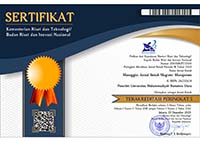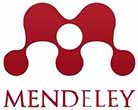Analysis Of Canvas Business Models In Vaboja (Vas Bonggol Jagung) Using Corn Waste
Abstract
Keywords
Full Text:
PDFReferences
Gondosaputro, H. M. (2017). ANALISIS BUSINESS MODEL CANVAS PADA CV. TRIPUTRA PERKASA. AGORA , 5.
J. Magretta, "Why Business Models Matter," 1 May2002.[Online].Available:https://hbr.org/2002/05/why-business-models-matter.
Moleong, L. (2010). metodologi penelitian kualitatif. Bandung, PT. Remaja Rosdakarya.
Nita Jessica dan Ratih Indriyani, S. M. (2017). ANALISIS BUSINESS MODEL CANVAS PADA TIROTTI BAKERY. AGORA , 5.
N. K. Malhotra, Marketing Research: An Applied Orientation, New Jersey: Pearson, 2010.
Ni Wayan Cahya Ayu Pratami, I. P. (2016). Penerapan Bisnis Model Kanvas Dalam Penentuan Rencana Manajemen Usaha Jasa Pengiriman Dokumen Di Denpasar. JURNAL SISTEM DAN INFORMATIKA, 11 (1).
Osterwalder, A., Pigneur, Y. (2010). Business Model Generation. Canada: John Wiley dan Sons, inc.
Suharti. (2015). Penerapan Business Model Canvas Pada Perumahan Galaxy Regency Malang PT. Sarana Hijrah Kamulyan. Jurnal Fakultas Ekonomi dan Bisnis Universitas Brawijaya Malang
T. Greenwald, "Business Model Canvas: A Simple Tool For DesigningInnovative Business Models," 31 Januari 2012. [Online]. Available:https://www.forbes.com/sites/tedgreenwald/2012/01/31/businessmodel-canvas-a-simpletool-for-designing-innovative-businessmodels/#753845f016a7.
DOI: https://doi.org/10.30596/jasc.v2i2.3214
Refbacks
- There are currently no refbacks.
JASc (Journal of Agribusiness Sciences)
Fakultas Pertanian Universitas Muhammadiyah Sumatera Utara
Kampus Utama
Jl. Kapten Muchtar Basri No.3, Glugur Darat II,Medan
Sumatera Utara-20238
E-mail: jasc@umsu.ac.id
This work is licensed under a Creative Commons Attribution-ShareAlike 4.0 International License.
View My Stats






